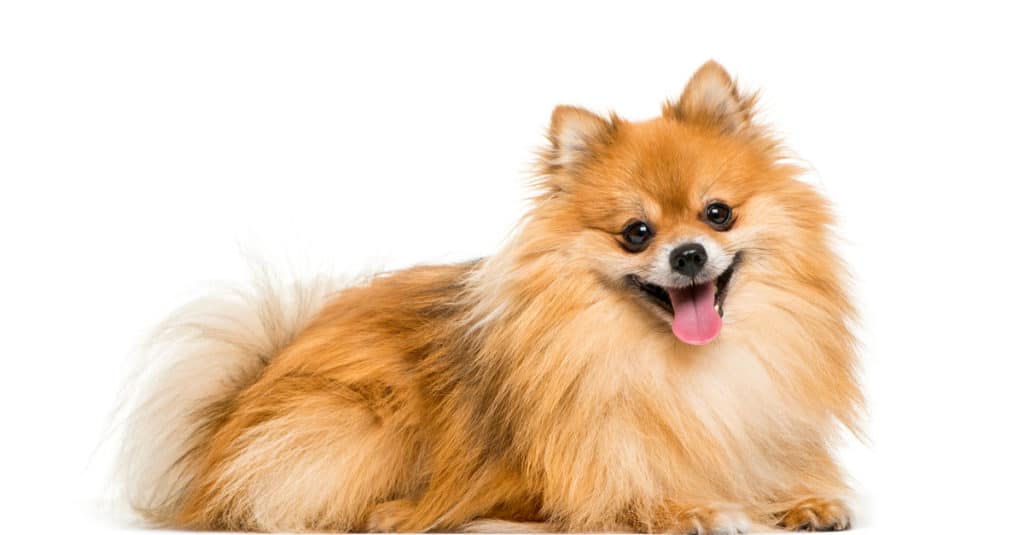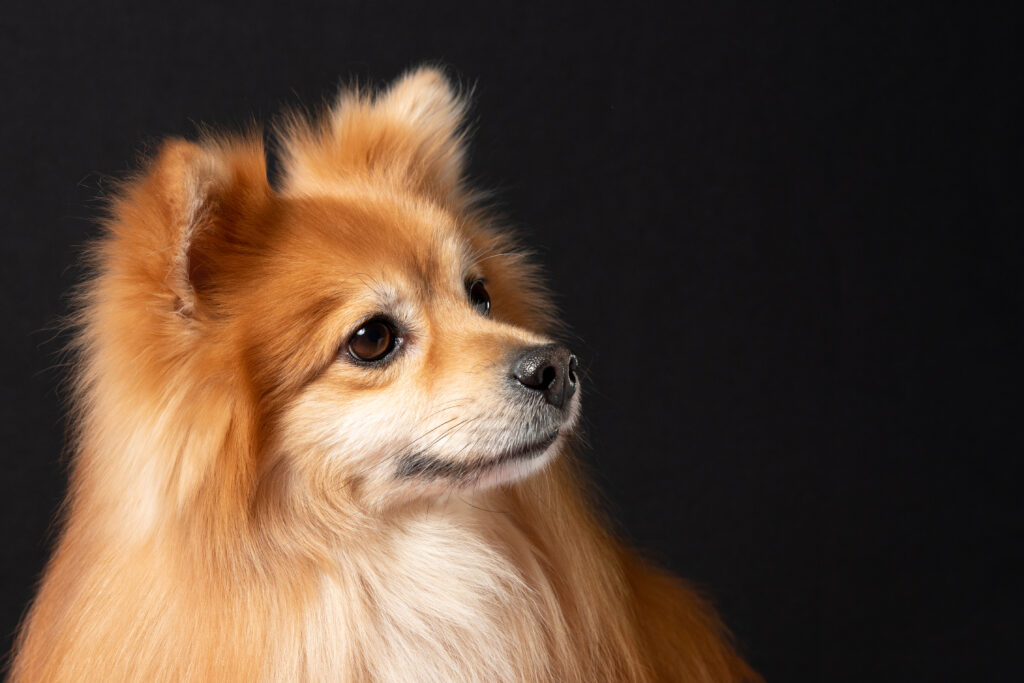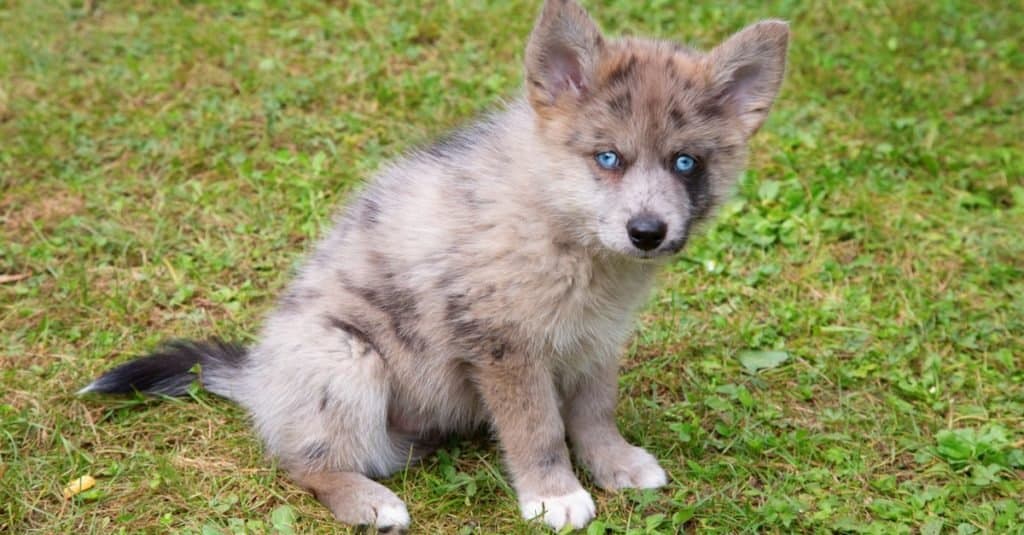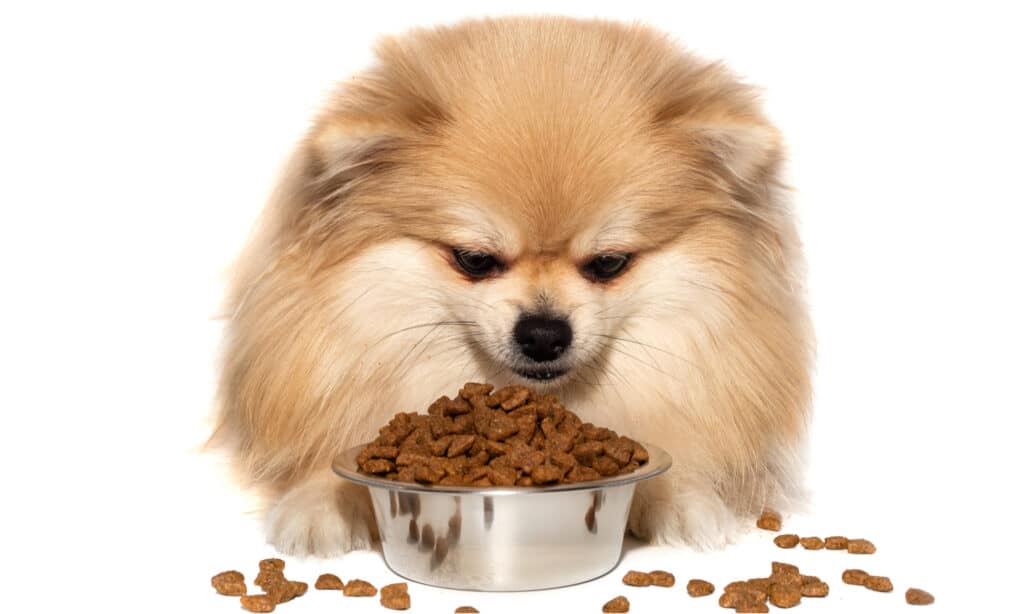There is only one official Pomeranian breed. However, there are variations, like “teddy bear Pomeranians.” Sadly, these dogs are bred unethically. Breeders are typically in it for the money and charge a high price for dogs that are more likely to suffer from various health conditions.
It’s important not to support these breeders, as it only funds them to continue breeding and harming dogs.
Below, we’ll talk about five types of Pomeranians and how to find an ethical Pomeranian breeder or rescue.
What Is A Pomeranian?

These little dogs are cute, require moderate exercise, and suit many people’s lifestyles well.
©Eric Isselee/Shutterstock.com
Pomeranians are small dogs around 6-7 inches tall and three to seven pounds. They’re affectionate, sometimes to the point of being clingy or having separation anxiety. They tend to be very adaptable, vocal, and fluffy!
This breed is popular for good reason. Pomeranians are cute, require moderate exercise, and suit many people’s lifestyles well.
However, they’re not good for those who don’t want to groom a dog regularly or who spend most of their days away from home.
1. Fox Faced Pomeranian

Foxed face Pomeranians are the only official Pomeranians bred to follow AKC standards.
©Jen Ottepka/Shutterstock.com
Fox-faced Pomeranians are bred to follow American Kennel Club (AKC) breed standards. In this case, that means long snouts and pointed ears.
These Pomeranians are considered well-bred compared to the others on this list. However, it’s always important to research a breeder considerably before buying a puppy from them, as backyard breeders and puppy mills far outnumber reputable breeders, even when it comes to fox-faced Poms.
2. Teddy Bear Pomeranian
Teddy bear Pomeranians are bred to have shorter snouts, rounder faces, and large eyes set close to the muzzle. They don’t follow AKC breed standards for the Pomeranian.
The biggest problem with these dogs is their shortened muzzles. While well-bred Pomeranians have average length (mesocephalic) snouts, teddy bear Pomeranians have brachycephalic snouts.
Dogs with brachycephalic snouts struggle in their day to day lives and are prone to a variety of health problems. They have trouble breathing, exercising, and maintaining their body temperature.
Brachycephalic syndrome is common in these dogs. They have small nostrils and elongated bones and soft palate in the mouth and throat which can block their airway. They also have other abnormalities in their airway that hinder their ability to breathe and can cause other health problems.
3. Baby Doll Pomeranian
Baby doll Pomeranians have shortened snouts, but not as short as those of teddy bear Poms. Still, they can suffer from the same health problems discussed above. Like teddy bears, AKC does not accept baby doll Pomeranians under their breed standards.
These pups also have round faces and large, expressive eyes.
4. Teacup Pomeranian
Teacup Pomeranians are a part of a trend to make dogs smaller. This is concerning, because most breeders pay more attention to the size and “cuteness” of the puppies rather than their health.
They’re bred using the smallest dogs in the litter, or the runts. Over time, the puppies become smaller and smaller. Teacup Pomeranians weigh under three pounds.
Teacup dogs often die at a young age, as their organs don’t develop properly. They are at high risk of heart disease, breathing problems, low blood sugar, luxating patella (when the kneecaps slide out of position), arthritis, liver problems, seizures, and hydrocephalus (a buildup of fluid in the brain).
5. Pomeranian Mixes

The responsible way to adopt a mixed breed dog, like this baby Pomsky, is to visit your local animal shelter or dog rescue.
©Fedor Selivanov/Shutterstock.com
In recent years, there have been an influx of “designer dogs” or mixed breeds sold at a very high price. Some common Pomeranian mixes you might see include Pomchis (Pomeranian Chihuahua mixes), Yorkie-Poms (Yorkshire Terrier Pomeranian mix), or Pomapoos (Pomeranian Poodle mixes).
Mixed breeds in themselves aren’t necessarily bad or unhealthy. The problem is that the only incentive for people to breed these dogs is money. The majority of breeders aren’t breeding for any other purpose and don’t breed ethically.
This means they don’t perform genetic health tests, which can ensure the parent dogs don’t pass down health conditions to the puppies. They might keep the dogs in poor conditions, neglect them (especially the parents!), and not care where their puppies end up. This can lead to more dogs in shelters, neglected or abused.
The responsible way to adopt a mixed breed dog is to visit your local animal shelter or dog rescue. There are even Pomeranian-specific rescues that typically carry both purebreds and mixed breeds.
Pomeranian Coat Colors

Pomeranians can have a wide variety of coat colors, including black, tan, cream, and red.
©Eva Sustar/Shutterstock.com
Now that we’ve discussed Pomeranian types, let’s talk about coat colors!
Pomeranians can have a wide variety of coat colors according to AKC breed standards. These include:
- Black
- Black and tan
- Blue
- Blue and tan
- Blue merle
- Chocolate
- Chocolate and tan
- Cream
- Orange
- Orange sable
- Red
- Red sable
- White
- Wolf sable
- Cream sable
- Beaver
- Tri-colored
- Blue sable
Pomeranians can also have the following markings on their coats:
- White
- Merle
- Tan
- Tricolor
- Brindle
- Sable
- Irish marked
- Parti-color
- Mask
How to Find Reputable Pomeranian Breeders

Reputable breeders should allow their dogs access to food and water.
©Vadzim Mashkou/Shutterstock.com
Remember, reputable breeders will only breed fox-faced Pomeranians.
Look for the following signs to ensure a breeder is reputable:
- Wait list. It’s difficult to wait, but reputable breeders don’t breed more puppies than they have homes for. They have homes lined up before breeding their dogs. A breeder offering a dog today is a red flag.
- Genetic testing and ancestry. Reputable breeders can provide proof of their dog’s ancestry. They also have a veterinarian perform genetic health testing to ensure healthy puppies.
- Vet visits. Your breeder should be able to show proof that the litter has received vet care, like vaccines, deworming, and check-ups.
- Knowledge and honesty. Reputable breeders are knowledgeable about Pomeranians and breeding and will answer questions honestly.
- Asking questions. No responsible breeder will hand over a puppy to just anyone! They should have questions about your family and home to ensure a good fit.
- A return policy. Reputable breeders never want their dogs to end up in shelters. They make adopters sign a contract stating they’ll return the puppy to the breeder if they need to rehome.
- The ability to meet the mom. Reputable breeders will let you meet the mother dog. They’ll also allow you to see where the dogs live. It should be a clean home environment with plenty of space and access to food and water.
Dogs shouldn’t be in small crates, outdoors, or in overcrowded environments. If a breeder wants to meet in a neutral place, they may not be keeping their dogs in adequate conditions. - Not selling multiple litters at once. Reputable breeders shouldn’t have more than a couple litters at a time. If they are selling a variety of breeds or litters, they may be a puppy mill.
Conclusion
We hope this article has helped you learn more about Pomeranians and decide if they’re right for you. Remember that some breeders are only in it for the money and will breed puppies with poor health, so be careful who you purchase a puppy from and which type of Pomeranian you purchase.
And, of course, it’s always great to adopt a puppy or dog from a rescue or shelter. There are many Pomeranians all over the country who need new homes!
Ready to discover the top 10 cutest dog breeds in the entire world?
How about the fastest dogs, the largest dogs and those that are -- quite frankly -- just the kindest dogs on the planet? Each day, AZ Animals sends out lists just like this to our thousands of email subscribers. And the best part? It's FREE. Join today by entering your email below.
Thank you for reading! Have some feedback for us? Contact the AZ Animals editorial team.








